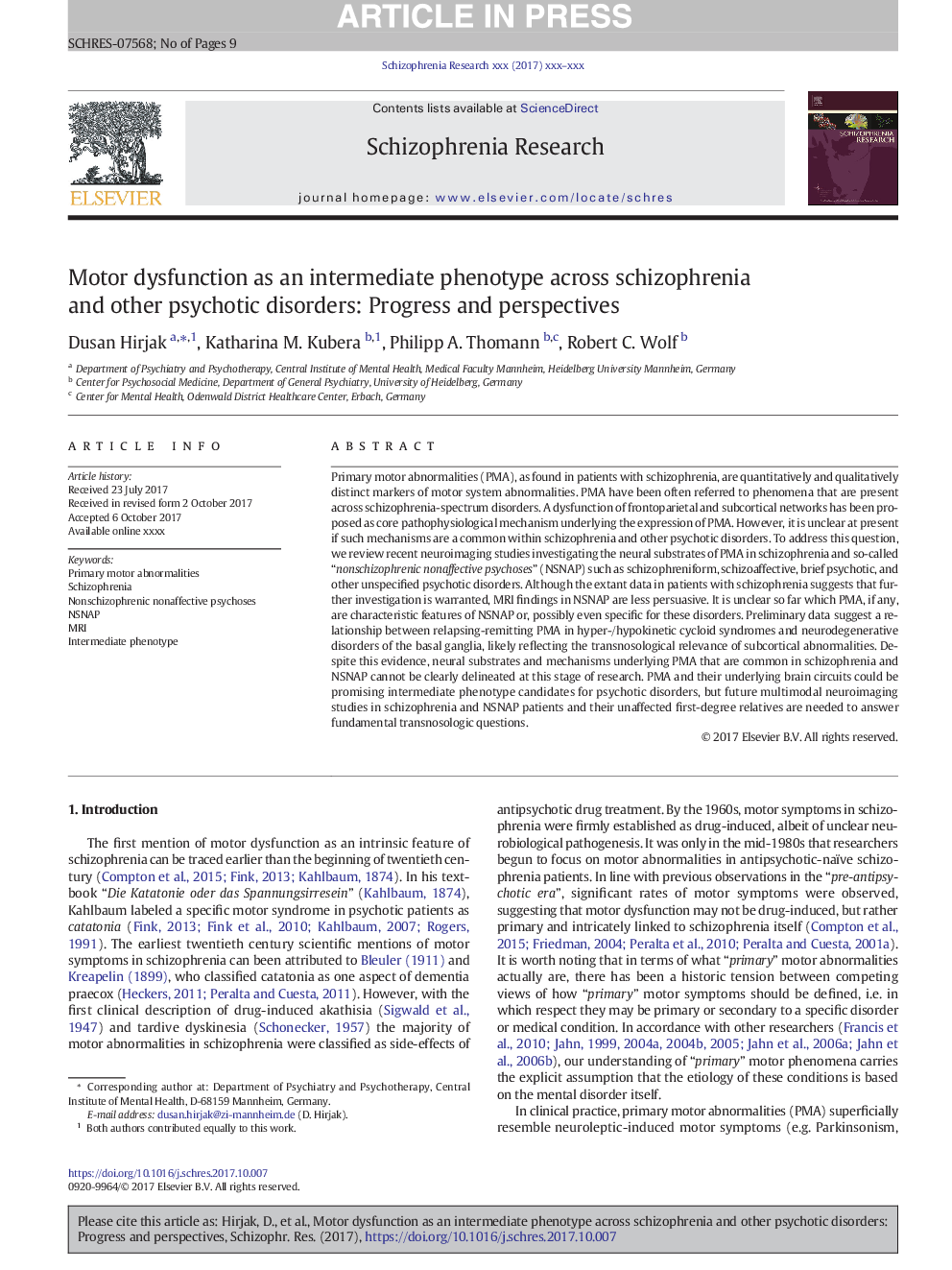ترجمه فارسی عنوان مقاله
اختلال حرکت موتور به عنوان یک فنوتیپ متوسط در سراسر اسکیزوفرنیا و سایر اختلالات روانپریشی: پیشرفت و دیدگاه
عنوان انگلیسی
Motor dysfunction as an intermediate phenotype across schizophrenia and other psychotic disorders: Progress and perspectives
| کد مقاله | سال انتشار | تعداد صفحات مقاله انگلیسی |
|---|---|---|
| 161291 | 2017 | 9 صفحه PDF |
منبع

Publisher : Elsevier - Science Direct (الزویر - ساینس دایرکت)
Journal : Schizophrenia Research, Available online 1 November 2017

